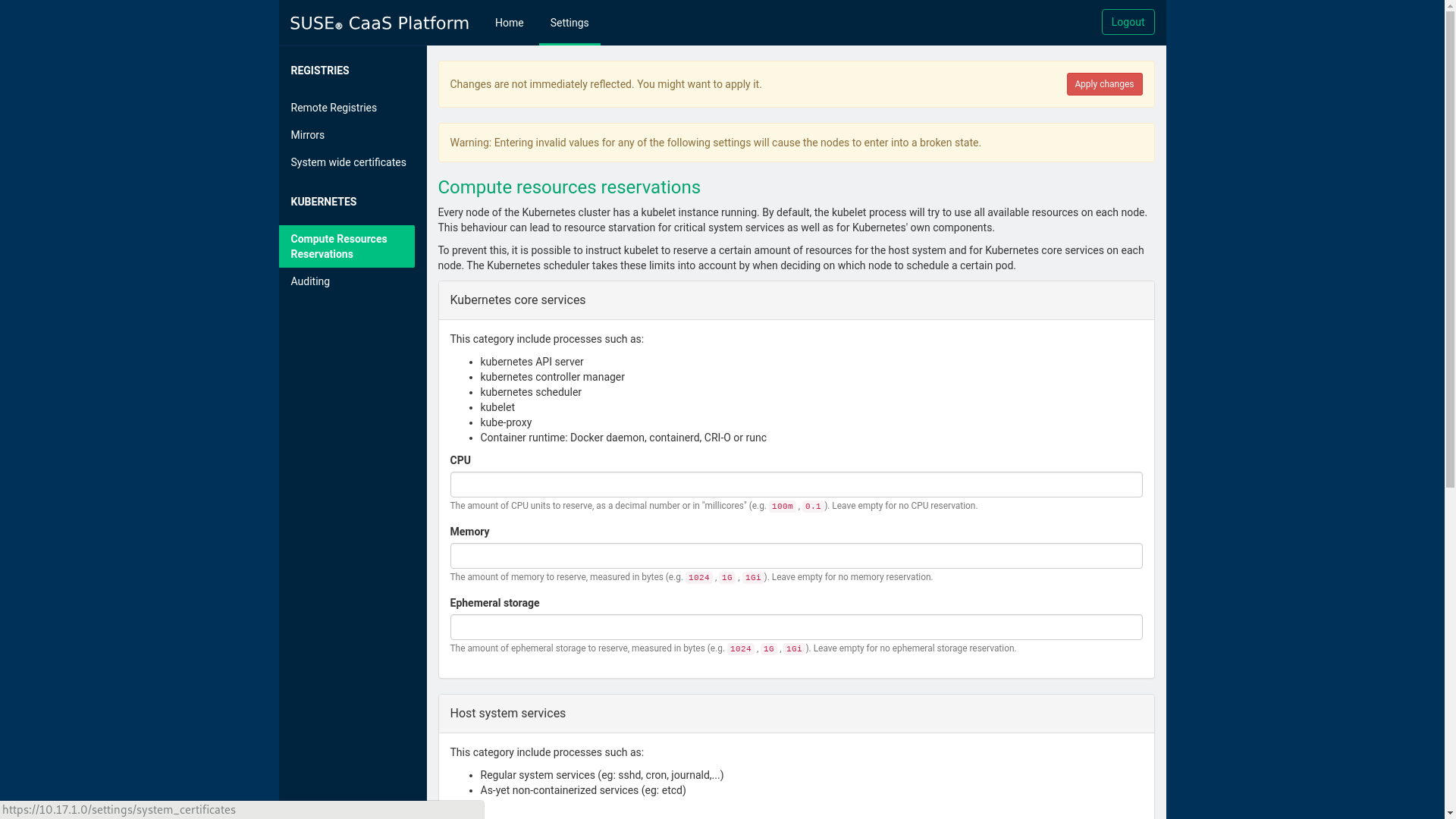Ecosyste.ms: Awesome
An open API service indexing awesome lists of open source software.
https://github.com/suse/velum
Dashboard for CaaS Platform clusters (v1, v2 and v3)
https://github.com/suse/velum
caasp cloud-native docker kubernetes kubernetes-cluster ruby-on-rails saltstack
Last synced: 20 days ago
JSON representation
Dashboard for CaaS Platform clusters (v1, v2 and v3)
- Host: GitHub
- URL: https://github.com/suse/velum
- Owner: SUSE
- License: apache-2.0
- Archived: true
- Created: 2017-01-11T11:14:34.000Z (about 8 years ago)
- Default Branch: master
- Last Pushed: 2019-04-03T13:55:21.000Z (almost 6 years ago)
- Last Synced: 2024-09-30T13:34:08.979Z (4 months ago)
- Topics: caasp, cloud-native, docker, kubernetes, kubernetes-cluster, ruby-on-rails, saltstack
- Language: Ruby
- Homepage: https://www.suse.com/
- Size: 2.49 MB
- Stars: 54
- Watchers: 24
- Forks: 30
- Open Issues: 10
-
Metadata Files:
- Readme: README.md
- License: LICENSE
Awesome Lists containing this project
README
# Velum
| master |
|--------|
| [](https://travis-ci.org/kubic-project/velum) |
Velum is a dashboard that manages your Kubic/SUSE CaaS Platform cluster. With Velum, you will
be able to:
- Bootstrap a Kubernetes cluster with a simple click.
- Manage your Kubernetes cluster: adding and removing nodes from your cluster,
monitoring faulty nodes, configuring the cluster, etc.
- Setup an update policy that suits your needs. Kubic/SUSE CaaS Platform already provides a
transparent and sensible procedure for updates that guarantees no downtime,
but with Velum you will be able to further tune this.
The architecture of Kubic/CaaS Platform uses [Salt](https://saltstack.com/) quite heavily,
and worker nodes are supposed to run as
[Salt minions](https://docs.saltstack.com/en/latest/ref/cli/salt-minion.html). These
Salt minions should then register to Velum, which acts as a Salt master. As an
administrator, when setting up the cluster, you will see nodes popping up, and
then you will be able to provision all the nodes from your cluster with Kubernetes
in a single click.
Once you have bootstrapped your cluster, you will be presented with a web
application that allows you to manage your cluster, define your update policy,
and much more.


## Development
You can start a Velum development environment by following the instructions in [caasp-kvm](https://github.com/kubic-project/automation/caasp-kvm).
## Testing
After you started a Velum development [environment](https://github.com/kubic-project/automation#caasp-devenv). Follow this steps:
1. ssh into the admin node (normally the IP is `10.17.1.0`)
2. run this docker command
`docker exec -it $(docker ps -q -f 'name=velum-dashboard') entrypoint.sh bash -c "RAILS_ENV=test rspec spec"`
This will execute the test battery inside the velum-dashboard container. To run a specific test file specify it like this:
`docker exec -it $(docker ps -q -f 'name=velum-dashboard') entrypoint.sh bash -c "RAILS_ENV=test rspec spec/features/file_name_spec.rb"`
## Licensing
Velum is licensed under the Apache License, Version 2.0. See
[LICENSE](https://github.com/kubic-project/velum/blob/master/LICENSE) for the
full license text.